Preserving Newfoundland’s Boat building heritage
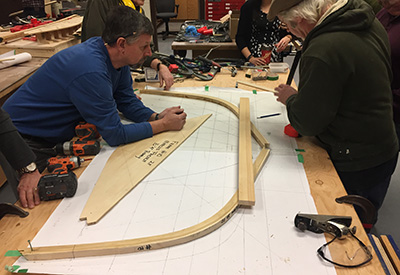
June 14, 2018
Newfoundland and Labrador have a long history of wooden boat and ship building, from simple punts and dories to large fishing and trading schooners. Just a generation ago wooden craft of all types could be found in the hundreds of harbours along the coast. Today most of the wooden boats are gone and so too are many of the people that new and understood the skills required to build them. It is encouraging to see the efforts being made to preserve the knowledge of wooden boat building and pass it along to a new generation. True we are not likely to see a return of large scale wooden boat building, but the skills involved in building small craft are just as precious.
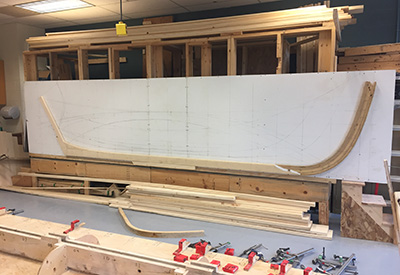 The Wooden Boat Museum of Newfoundland and Labrador (WBMNL) is a not-for-profit Corporation with charitable status, operating as professional archivist, conservator, exhibitor and transmitter of this province’s knowledge and history of wooden boats, their economic use and contribution to community life. WBMNL’s programs and initiatives are designed to connect wooden boat builders and enthusiasts and to encourage sharing the knowledge and skills associated with traditional wooden boat building. As we continue to learn about construction and design from our tradition-bearers, WBMNL promotes and safeguards the transmission of this knowledge to future generations.
The Wooden Boat Museum of Newfoundland and Labrador (WBMNL) is a not-for-profit Corporation with charitable status, operating as professional archivist, conservator, exhibitor and transmitter of this province’s knowledge and history of wooden boats, their economic use and contribution to community life. WBMNL’s programs and initiatives are designed to connect wooden boat builders and enthusiasts and to encourage sharing the knowledge and skills associated with traditional wooden boat building. As we continue to learn about construction and design from our tradition-bearers, WBMNL promotes and safeguards the transmission of this knowledge to future generations.
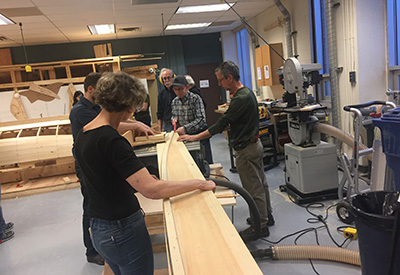 The WBMNL owes its beginnings to an organization with a similar name – The Winterton Boat Building and Community Museum. That institution was started in 1997 under the direction of the Town of Winterton’s Heritage Advisory Board. Inspired by Dr. David Taylor’s book Boat Building in Winterton, the founding group focused on Winterton’s boat building story as its main theme. It soon became apparent that these boat building skills and knowledge were in danger of disappearing, not only in Winterton but across the province. Meanwhile these very same skills and knowledge were critical to enabling our forefathers to survive in a harsh marine and coastal environment and to establish the cultural landscape we have today. This heritage was too important to lose and with this in mind, a decision was taken to expand the mandate and form a province-wide organization known as the Wooden Boat Museum of Newfoundland and Labrador (WBMNL).
The WBMNL owes its beginnings to an organization with a similar name – The Winterton Boat Building and Community Museum. That institution was started in 1997 under the direction of the Town of Winterton’s Heritage Advisory Board. Inspired by Dr. David Taylor’s book Boat Building in Winterton, the founding group focused on Winterton’s boat building story as its main theme. It soon became apparent that these boat building skills and knowledge were in danger of disappearing, not only in Winterton but across the province. Meanwhile these very same skills and knowledge were critical to enabling our forefathers to survive in a harsh marine and coastal environment and to establish the cultural landscape we have today. This heritage was too important to lose and with this in mind, a decision was taken to expand the mandate and form a province-wide organization known as the Wooden Boat Museum of Newfoundland and Labrador (WBMNL).
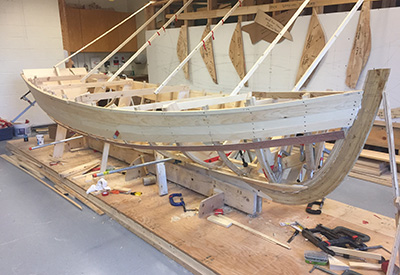 WBMNL was incorporated in 2008 as a not-for-profit organization with charitable status, operated by a Board of Directors elected from its members. The premises in Winterton became the headquarters for WBMNL and continues to be operated by the Heritage Advisory Board, while the WBMNL Board of Directors focuses on building and developing its provincial mandate.
WBMNL was incorporated in 2008 as a not-for-profit organization with charitable status, operated by a Board of Directors elected from its members. The premises in Winterton became the headquarters for WBMNL and continues to be operated by the Heritage Advisory Board, while the WBMNL Board of Directors focuses on building and developing its provincial mandate.
In Memory of Fred Green
One of the founding members of our museum was Fred Green. He built a rodneyat the museum with his father Alfred, using three-piece moulds that have been in their family for generations. The boat was built over several years providing many museum visitors with the sights, sounds, and stories of boat building.
The launch of the rodney became a great community, media, and family event, inspiring Fred to write the poem, Only a Boat. Like so many of our wooden boat builders, Alfred and Fred are no longer with us but the boat and the poem remain, giving us great insight into the Boat Building Workshops
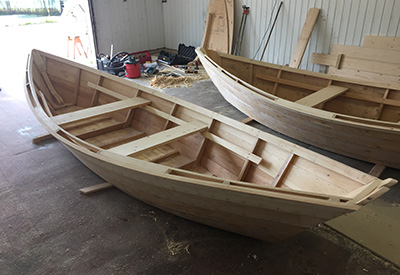 The Wooden Boat Museum of Newfoundland & Labrador offers Boat Building Workshops that teach the basic skills and knowledge required to build a wooden boat. Workshop participants actively learn how to build a traditional wooden boat through hands-on training with instruction and interpretation from our resident boat builder and museum staff. Workshops are offered at various levels with each level increasing in duration, material covered, and skills developed.
The Wooden Boat Museum of Newfoundland & Labrador offers Boat Building Workshops that teach the basic skills and knowledge required to build a wooden boat. Workshop participants actively learn how to build a traditional wooden boat through hands-on training with instruction and interpretation from our resident boat builder and museum staff. Workshops are offered at various levels with each level increasing in duration, material covered, and skills developed.
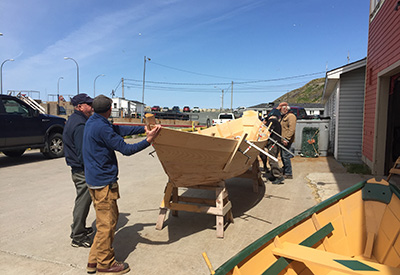 The distinction between a punt and a rodney, if there is even a distinction to be made, is often debated among boat builders and enthusiasts. Both punts and rodneys are small (under 25 feet) work boats with keel and rounded bottoms. Used in the inshore and coastal fisheries, the design of these boats varies between communities and builders. For some, the terms “punt” and “rodney” may be used interchangeably to refer to the same boat. For others, a rodney is smaller than a punt. Sometimes the shape of the counter, or transom, is a defining feature.
The distinction between a punt and a rodney, if there is even a distinction to be made, is often debated among boat builders and enthusiasts. Both punts and rodneys are small (under 25 feet) work boats with keel and rounded bottoms. Used in the inshore and coastal fisheries, the design of these boats varies between communities and builders. For some, the terms “punt” and “rodney” may be used interchangeably to refer to the same boat. For others, a rodney is smaller than a punt. Sometimes the shape of the counter, or transom, is a defining feature.
One Day Sessions
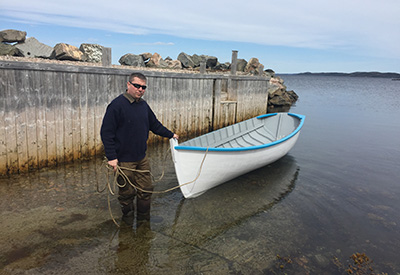 One day workshops take place every Saturday during July and August and offer visitors the chance to take part in the construction of a rodney. Originally built by Marcus French of Winterton, this rodney was documented by folklorist David Taylor in the 1970s and is now being reconstructed from the information Mr. French provided through oral history interviews, measurements collected in fieldwork and the moulds that have been preserved by the Museum. Participants will play an active role in the construction of the rodney while learning about Marcus French and intangible cultural heritage that surrounds building and using traditional wooden boats.
One day workshops take place every Saturday during July and August and offer visitors the chance to take part in the construction of a rodney. Originally built by Marcus French of Winterton, this rodney was documented by folklorist David Taylor in the 1970s and is now being reconstructed from the information Mr. French provided through oral history interviews, measurements collected in fieldwork and the moulds that have been preserved by the Museum. Participants will play an active role in the construction of the rodney while learning about Marcus French and intangible cultural heritage that surrounds building and using traditional wooden boats.
Check out www.boatsandbuilders.com to learn more about the work of the WBMNL and the other courses available.
All photos courtesy of the WBMNL




























